This post was originally published in January 2018 and has been updated in September 2021 for accuracy.
Here we are once again discussing the topic of lithium batteries. However, this discussion is on placarding and segregation. Before we get going, just to clarify, the class 9 lithium battery hazard label is a “newer” label, but the placard for lithium batteries is still the regular class 9 hazard placard.
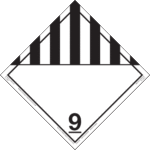 Placard for lithium batteries |
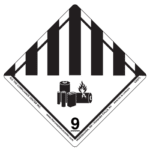 Label for lithium batteries |
So here is our attempt to simplify the placarding and segregation requirements for lithium batteries. Let’s take a look at each topic and regulation to sort things out.
TDG Regulations – Canada Ground
Placarding (Part 4: Dangerous Goods Safety Marks): Class 9 material requires placarding on the vehicle if the gross mass is equal to or exceeds 500 kg.
Segregation: TDG Regulations do not address segregation rules for batteries.
49 CFR – US Ground
Placarding (§172.504): Class 9 materials are found in Table 2. This indicates that placards would be needed when the gross aggregate weight of the materials in the transport vehicle reaches 1001 pounds (454 kilograms). In paragraph (f)(9), there is an exception. The exception tells us that placards are not needed for Class 9 materials shipped domestically. Easy right? Now, this paragraph also tells us that should you use a bulk packaging of batteries; we would be required to mark the identification number on an orange panel, a white square-on-point configuration, or a Class 9 placard.
Segregation and Separation Chart of Hazardous Materials (§177.848): There is currently nothing in this section of 49 CFR to indicate batteries should be segregated or separated from other hazardous materials.
62th Edition of IATA for Air
Placarding: There are no requirements to placard a plane in the IATA Dangerous Goods regulations. You must still follow any ground placarding rules that would apply to getting your shipment to and/or from the airport.
Segregation of Dangerous Goods (9.3.2.1): The table shown below includes Class 9 materials, but it directs you to read Section 9.3.2.1.3. That paragraph pertains to lithium batteries. Basically, if you have a lithium-ion battery that meets the criteria of being a Section 1A or Section 1B in Packing Instruction 965, then it must be segregated from other packages/overpacks of goods labeled as flammable or explosive. The same is true for lithium metal batteries and Packing Instruction 968. The paragraph explicitly lists goods in Class 1 Explosives (except Division 1.4S), Division 2.1 Flammable Gases, Class 3 Flammable Liquids, Division 4.1 Flammable Solids, and Division 5.1 Oxidizers. Now the paragraph uses the word “must,” which means this is a mandatory requirement.
If you are a shipper, per Section 5.0.1.5.1, those Section 1A or 1B batteries in Packing Instructions 965 and 968 are not permitted in overpacks at all with any explosives or flammables. A shipper should also review 5.0.2.11 paragraph (h) note 4. This tells a shipper that you are not allowed to package batteries meeting Section 1A or 1B in the same outer package as any explosive or flammable material.
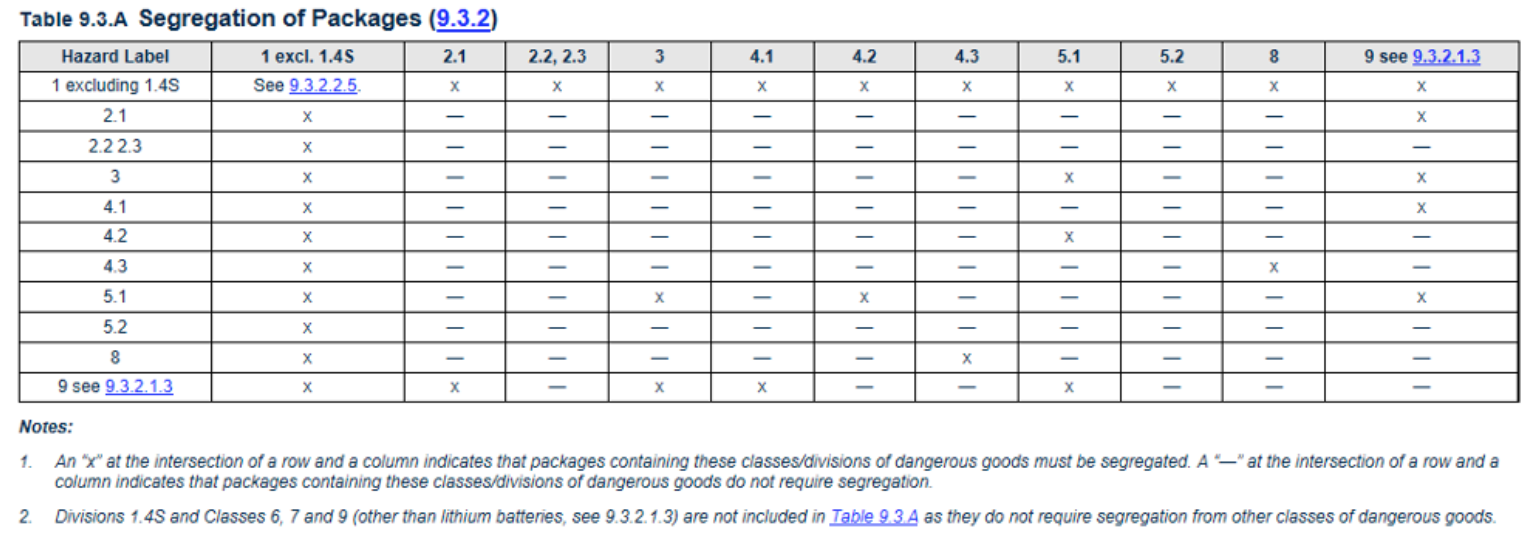
39-18 IMDG for Vessel
Placarding (Chapter 5.3): The general rule for placarding within IMDG is “if there is a label on the package, then a placard is required.” So, if our packages of batteries are labeled with a Class 9 lithium battery hazard label, we will need a placard.
Segregation (Chapter 7.2) and Stowage (Chapter 7.1): Segregation for IMDG is a bit complex. Not only do you have to pay attention to the segregation requirements but also to those for stowage and what is in the Dangerous Goods List (DGL). Luckily for lithium batteries of all types the information is the same. Let’s start with the information in the DGL. Column 16a for Stowage and Handling tells us to follow Category A and SW19. Category A tells us to stow the packages either “on deck” or “under deck,” but nothing about keeping them away from any certain goods. Column 16b for Segregation is blank, so that is easy. Column 17 says, “batteries may cause fire,” but nothing about any particular goods to avoid. After all of that, there is nothing in the IMDG Code that directly tells us to segregate lithium batteries from any other goods.
Hopefully, by listing things here as they are, it will be easier to understand. No one needs to be “confused” anymore. If you are, please contact ICC today for all of your battery questions, packaging, and training needs.
Stay up to date and sign up for our newsletter!
We have all the products, services and training you need to ensure your staff is properly trained and informed.
 IATA Publications |
 Canadian TDG Publications |
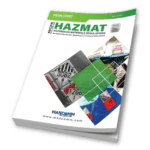 US 49 CFR Publications |
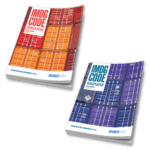 IMDG Publications |
This post was originally written by Paula Reavis.






